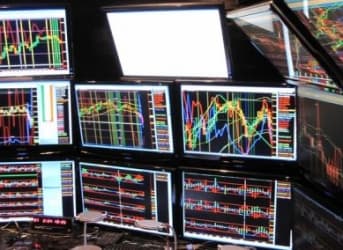Recently, I dedicated some time studying in much further depth the explosion in volatility in the broader market as well as in underlying stocks. We have witnessed unprecedented volatility in E&P stocks in recent months. But the commodity crash is spreading to Biotechs and even the broader technology sector with the implosion of Linkedin stock last week.
First, it is important to note what is driving the incremental volume as overall investor participation in day-to-day trading wanes. Every investor has witnessed a huge decline in overall liquidity, in part due to an investor class disenfranchised by 7 to 8 years of central bank easing and resulting asset price distortions. If an investor can’t rationalize valuation then they simply won’t invest. That has exacerbated price movements by those who are left: shorts and algo-trades (i.e., computers). On the former, it’s clear that the unprecedented level of short positions in the E&P space and in futures market illustrate the drivers of this volatility. Related: Despite Bold Predictions, T. Boone Pickens Sells All Oil Holdings
But more importantly, the price surges on certain short-term headlines – such as a potential OPEC meeting on output changes – leads to spiking prices one day, only to have them revert lower in the days that follow. These are classic tells to short covering. Broadly speaking the advent of computer driven trading that "captures headlines" and trades off it is part of this. But also the computerization of portfolio management through low-cost ETFs has become an even greater force. And as a result, money flows are becoming increasing disconnected from fundamental price movements.
This is occurring institutionally and through retail-based wealth management adoption of new technology. It is why you see individual stocks rise and fall by double digits in a single day when fundamental events like an earnings report are released, like LinkedIn. Simply put, institutions play macro factors, such as central bank policy moves, pulling moneys in and out of ETFs irrespective of underlying stock fundamentals or valuations. It is why large-cap tech stocks have risen to ridiculous valuations, such as with AMZN, only to fall some 30 percent in weeks – again, largely tied to macro money flows. Related: U.S. Rig Count In Free Fall: Plunges By 48 In One Week
On the wealth management front it is getting even more ridiculous. The use of robo-advisors, via Schwab and Wealthfront, use asset relocation computer algorithms, which are not based on what’s occurring day-to-day or month-to-month as earning miss expectations. Instead it does so based on historical returns and individual preferences like risk appetite. The problem is that the vehicles of choice are low-cost ETFs that are not actively managed funds by investment professionals who allocate monies based on fundamentals.
What’s more scary is that these robo- or computer-based advisors can’t mitigate short- to medium-term market risk by recommending to raise cash. Many investors probably are just now realizing this as their "advisor" (probably a computer) maintains an allocation based on long-term goals, not on whether we are in a secular bear market, which would suggest de-risking. All of these factors open the door to more volatility and even severe market crashes. We already saw some of that occur last year. Related: In Spite Of Plunging Rig Count, Oil Erases Earlier Gains
One last point. I wonder if a computer is sophisticated enough to determine the normalized price of a commodity in order to support production growth so as to prevent a price spike in 2017? Somehow I doubt it. More likely would be the tendency to instead weigh the swings in the dollar or Fed policy as important price determinants. For that matter, I’m certain they failed to foresee the bear market we are now in. We are certainly in an era of extreme asset price distortion, driven by central banks and new methods of computerized investing. It isn’t clear that this is a good thing.
As always you can find a supplement video on Leonard’s Youtube account.
By Leonard Brecken for Oilprice.com
ADVERTISEMENT
More Top Reads From Oilprice.com:
- Tesla Falling Out Of Favor With Investors
- Despite Huge Losses Oil Companies Reluctant To Shut In Production
- Conventional And Vertical Well Analysis


















